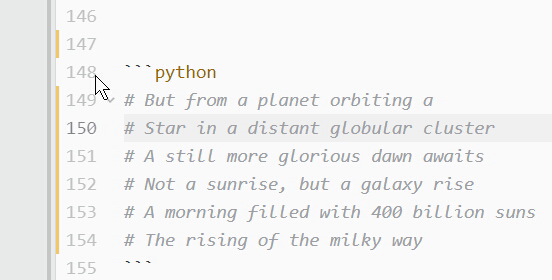What are the best practices for comments in Python?
What are the best practices for comments in Python?

Here are some best practices for writing comments in Python:
Consistent Indentation
Python uses indentation to define code blocks, and this applies to comments as well. Keep your comments indented consistently with the rest of your code to maintain readability.
Single-Line Comments
Use # to start a single-line comment, which extends to the end of the line. Use these for brief notes or explanations that don't require an entire block of text.
# This is a single-line comment
Multi-Line Comments
For longer comments or code blocks, use triple quotes (''' or """) to define a multi-line comment. These can span multiple lines and are useful for documenting larger code sections.
'''This is a multi-line comment
that spans multiple lines.
'''
Docstrings
Python uses docstrings to provide detailed documentation for functions, classes, and modules. A docstring is a special type of comment that starts with """ and can span multiple lines. Docstrings are useful for providing descriptive information about your code, such as its purpose, inputs, outputs, and any relevant details.
def my_function(x: int) -> str:"""
This function takes an integer x,
performs some complex calculation,
and returns a formatted string.
Args:
x (int): The input integer
Returns:
str: A formatted string representing the result
"""
pass
Use Clear and Concise Language
When writing comments, use clear and concise language that accurately describes your code. Avoid using jargon or overly technical terms unless you're confident they'll be understood by your audience.
Keep Comments Up-to-Date
As you refactor or update your code, make sure to revisit and update any related comments. This ensures that your documentation remains accurate and helpful for others.
Use Comments to Highlight Important Information
Comments can help draw attention to important information, such as:
Unexpected behavior or edge cases Code dependencies or assumptions Complex logic or algorithm detailsThis helps readers quickly understand the significance of certain code sections or potential issues with your implementation.
Avoid Obsolete or Redundant Comments
Remove any comments that are no longer relevant or accurate. This prevents clutter and makes it easier for others to focus on the most important aspects of your code.
In summary, Python comments should be:
Consistently indented Single-line or multi-line, depending on the content Used for docstrings, brief notes, or explanatory text Clear, concise, and up-to-date Helpful in highlighting important information Avoid obsolete or redundant commentsBy following these best practices, you'll create well-documented Python code that is easy to understand and maintain.
Python comment function docstring
The Python __doc__ attribute is used to provide a documentation string for a function, class, module, or package. This documentation string can be accessed using the built-in help() function in Python.
Here's an example of how you might use docstrings:
def greet(name):
"""
Greet someone by their name
Args:
name (str): The person's name to greet
Returns:
str: A greeting message
"""
return f"Hello, {name}!"
In this example, the __doc__ attribute is set to a string that provides documentation about what the function does. This string includes information about the arguments and return values of the function.
The help() function can be used to access this documentation:
help(greet)
This would print out the following output:
Help on function greet in module __main__:
greet(name)
Greet someone by their name
Args:
name (str): The person's name to greet
Returns:
str: A greeting message
Docstrings are useful for several reasons. First, they provide a way to document your code without having to maintain a separate documentation file. Second, docstrings can be used to generate API documentation for your code using tools such as pydoc or Sphinx.
Here's an example of how you might use the built-in pydoc module to generate HTML documentation from your Python code:
import pydoc
help(greet)
This would generate an HTML file with the same information that the help() function prints out. You can then view this HTML file in a web browser to see the documentation for your code.
Finally, docstrings are also used by IDEs such as PyCharm and Spyder to provide code completion and other features.
Here's an example of how you might use the __doc__ attribute with these IDEs:
__doc__. Click on "View" -> "Code" -> "Documentation". The documentation string will appear in the "Documentation" pane. In Spyder: Open your Python file in SpyCharm. Place your cursor on a function that has been documented using __doc__. Click on the "Help" button in the toolbar. Select "Function documentation". The documentation string will appear in the "Documentation" pane.
As you can see, docstrings are an important part of writing Python code. They provide a way to document your code without having to maintain a separate documentation file, and they can be used by IDEs and other tools to generate API documentation and provide code completion.





























